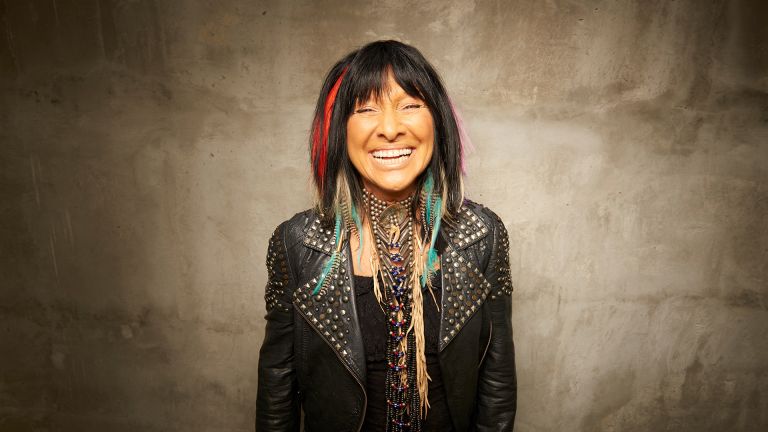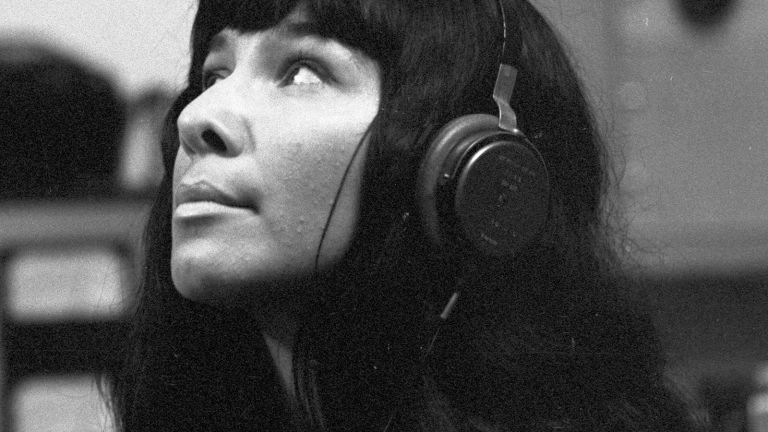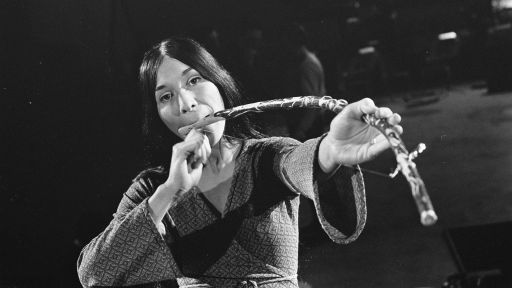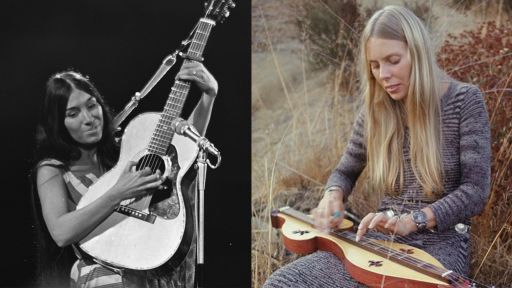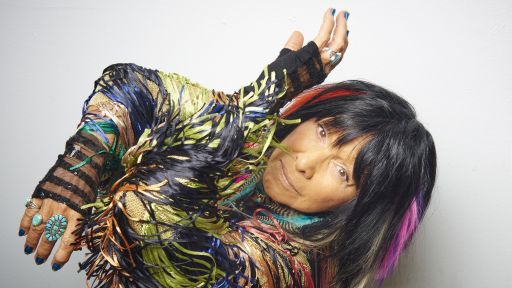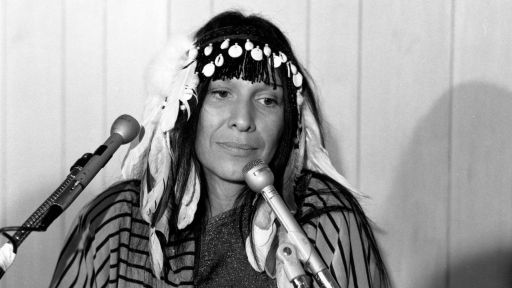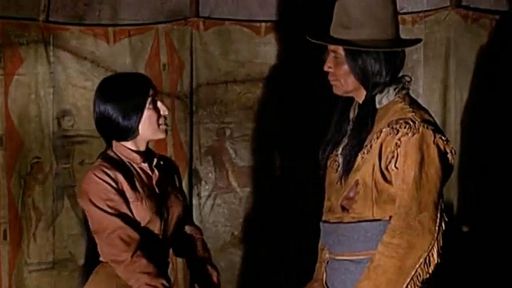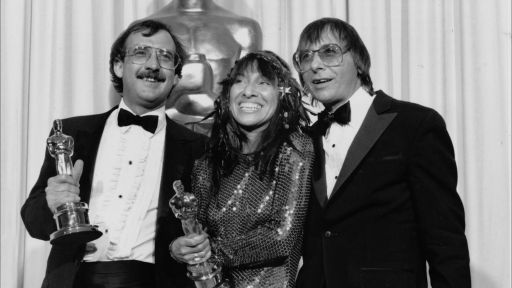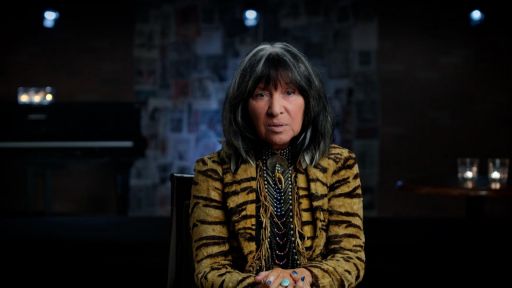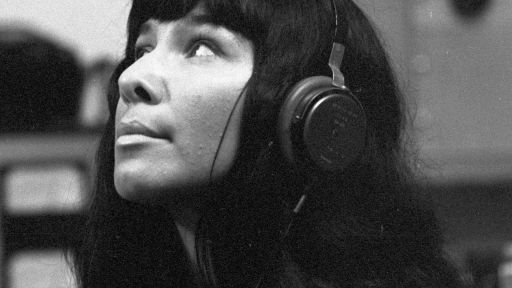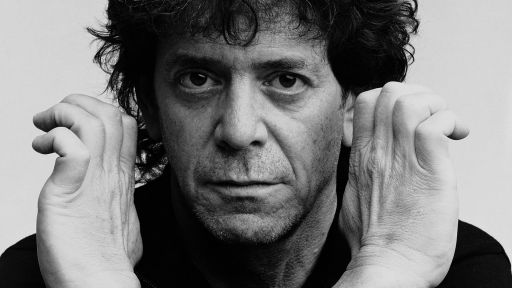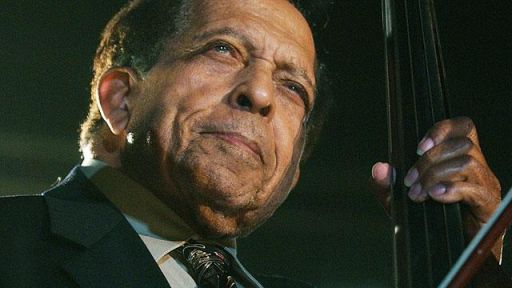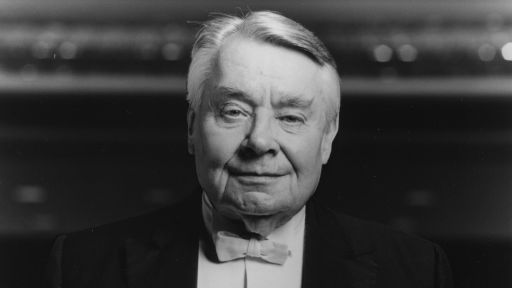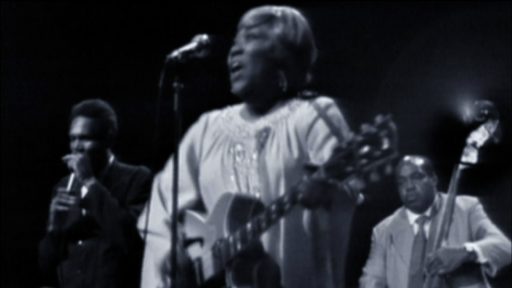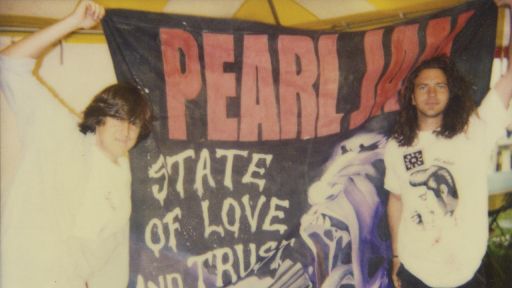Who is Buffy Sainte-Marie?
Every young person, becoming aware of the hardships of life, wept over Buffy Sainte-Marie’s song “Universal Soldier.” People in the feverish situation of falling out of love with people they cared for, found refuge in her song “Until It’s Time for You to Go.” Her recording of Joni Mitchell‘s “The Circle Game” kept folks tethered when they were flipping in and out of mind-expanding experiences in the 1960s. And who didn’t swoon every time they heard the tune she co-wrote, “Up Where We Belong,” for the movie “An Officer and a Gentleman?” That song granted her an Academy and Golden Globe Award.
But here’s the song lyric she wrote that stays with me:
I’m an Indian and I like sunshine
I’m an Indian and I like friends
And I am real and I can feel and I’d love to take your hand
Way heyo he-yo! Way heyo he-yo!
She wrote that for “Sesame Street” when she first starred on the show in 1976. That’s when I first met her.
I remember her as being stylish, regal and reserved. When she paved the way for us to have a shoot on a reservation, I got a sense of her effect on people when I overheard what they said as she passed by:
“What do you think about what she said at that powwow? What about that statement she said in that article? Do you think she is spending enough time with us? Can we count on her?”
I don’t know if she heard or cared about what people were saying—she was too busy engaging folks on how best to help troubled girls in their communities. This was a woman balancing a lot on her shoulders, I thought. Would her sensibility work on a kid’s show? Could she interact with Big Bird and Cookie Monster?
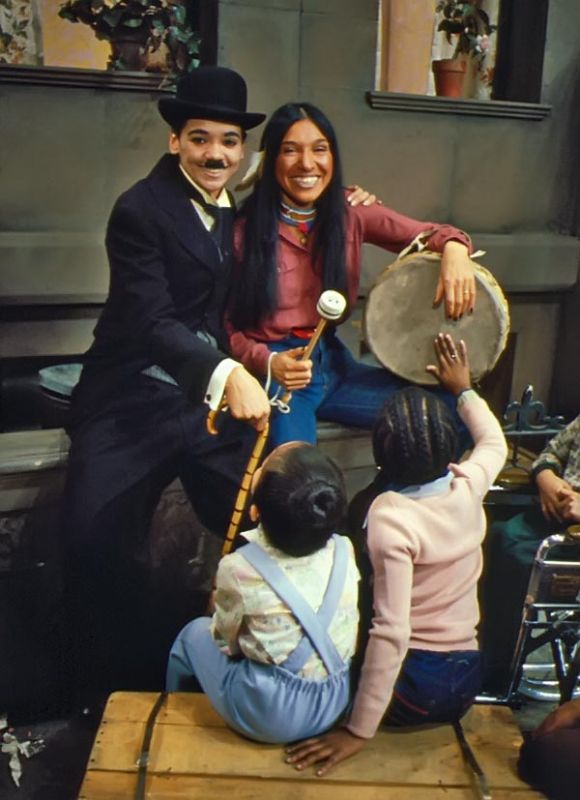
Sonia Manzano (as Charlie Chaplin) and Buffy Sainte-Marie on “Sesame Street.” Courtesy of Sonia Manzano.
We got to know each other. She shared documentaries that showed the most heartbreaking and inhuman treatment of Native people, and here’s the thing that stood out—though these injustices were horrendous enough to make my blood run cold, Buffy always seemed bright and hopeful. She never went to the dark side—instead she remained open and curious about better days to come.
We began to hang out. We went Latin salsa dancing, and to see fellow cast members in Shakespearean productions. One night we surprised ourselves by showing up in identical black spandex outfits. The punk rocker Sid Vicious had recently passed. She quipped, “People might think we are in mourning for Sid Vicious.”
At some point we talked about the representation of our people in media. Native people for her and Puerto Ricans for me. She used the television series “The Sopranos” to make this point—the reason they were uber successful was that most of the production team and actors were of Italian descent. They might have been in different social and economic classes, they might have mastered different disciplines, but because of their common heritage, they were naturally on the same page from the get-go. Therefore, they didn’t have to waste precious energy, politely explaining cultural differences to each other.
Buffy’s words were wise and have proven true in every project I’ve participated in since then.
Her role, along with her belly, expanded on “Sesame Street” when she married Sheldon Wolfchild, got pregnant and gave birth. Dakota “Cody” Starblanket Wolfchild became our youngest cast member. A baby born on the show even before my own Gabriela.
Here’s a true story—on a night before they were ready to appear, Buffy called Dulcy Singer, our show’s producer, suggesting she nurse Cody! On camera! The show agreed with Buffy’s suggestion. The way Buffy explained the process of nursing to Big Bird was wonderful. I’ll never forget the flurry nursing on-camera caused. La Leche League, an organization devoted to encouraging mothers to nurse, cheered. But Buffy and Cody also inspired “Sesame Street” to come up with a terrific story line about sibling rivalry. Big Bird becoming incensed that Buffy would be more interested in her son than in him was both hilarious and moving. Buffy’s gentle explanation that no one could ever replace Big Bird—the understatement of the year, as he was an eight-foot-tall yellow bird—was smooth and just right.
When she comes into New York City, I’m quick to buy a ticket to her concerts. Not only to see her, but to observe how her presence inspires people to show up in full and fancy Native regalia. It’s as if she prompts them to display who they are.
And now she writes books. Her picture books “Hey Little Rockabye: A Lullaby for Pet Adoption” and “Tapwe and the Magic Hat,” an indigenous story inspired by Indigenous traditions, bring me back to that lyric:
And I am real and I can feel and I’d love to take your hand
Way heyo he-yo! Way heyo he-yo!
Some time ago I reminded her of that song. She giggled that I had remembered it. Then it was my turn to be surprised. That lyric was perfect then, and even more perfect now.
So now I’ll answer my own question. Who is Buffy Sainte-Marie?
She’s the boldest woman I know.

